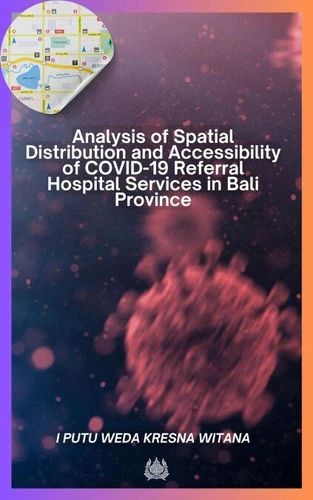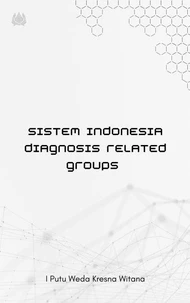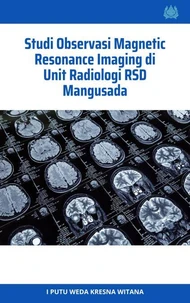Nouveauté
Analysis of Spatial Distribution and Accessibility of COVID-19 Referral Hospital Services in Bali Province
Par :Formats :
Disponible dans votre compte client Decitre ou Furet du Nord dès validation de votre commande. Le format ePub est :
- Compatible avec une lecture sur My Vivlio (smartphone, tablette, ordinateur)
- Compatible avec une lecture sur liseuses Vivlio
- Pour les liseuses autres que Vivlio, vous devez utiliser le logiciel Adobe Digital Edition. Non compatible avec la lecture sur les liseuses Kindle, Remarkable et Sony
 , qui est-ce ?
, qui est-ce ?Notre partenaire de plateforme de lecture numérique où vous retrouverez l'ensemble de vos ebooks gratuitement
Pour en savoir plus sur nos ebooks, consultez notre aide en ligne ici
- FormatePub
- ISBN8231534036
- EAN9798231534036
- Date de parution24/07/2025
- Protection num.pas de protection
- Infos supplémentairesepub
- ÉditeurWalzone Press
Résumé
This study was conducted to analyze the spatial distribution of COVID-19 referral hospitals in Bali Province and to assess the accessibility of healthcare infrastructure based on service radius and travel time to the nearest hospital. The objectives include identifying the spatial distribution patterns of referral hospitals and evaluating their accessibility across the region. The results show that the mapping index of COVID-19 referral hospitals in Bali Province is 1.16, indicating a dispersed distribution pattern.
The ratio of COVID-19 referral hospitals per 100, 000 population is 1.19, which is above the national standard. However, 26% of the total area of Bali Province lies beyond the 3-kilometer service radius of a referral hospital. In terms of travel time, 50% of the population can access the nearest COVID-19 referral hospital in less than 5 minutes, both on weekdays and holidays.
The ratio of COVID-19 referral hospitals per 100, 000 population is 1.19, which is above the national standard. However, 26% of the total area of Bali Province lies beyond the 3-kilometer service radius of a referral hospital. In terms of travel time, 50% of the population can access the nearest COVID-19 referral hospital in less than 5 minutes, both on weekdays and holidays.
This study was conducted to analyze the spatial distribution of COVID-19 referral hospitals in Bali Province and to assess the accessibility of healthcare infrastructure based on service radius and travel time to the nearest hospital. The objectives include identifying the spatial distribution patterns of referral hospitals and evaluating their accessibility across the region. The results show that the mapping index of COVID-19 referral hospitals in Bali Province is 1.16, indicating a dispersed distribution pattern.
The ratio of COVID-19 referral hospitals per 100, 000 population is 1.19, which is above the national standard. However, 26% of the total area of Bali Province lies beyond the 3-kilometer service radius of a referral hospital. In terms of travel time, 50% of the population can access the nearest COVID-19 referral hospital in less than 5 minutes, both on weekdays and holidays.
The ratio of COVID-19 referral hospitals per 100, 000 population is 1.19, which is above the national standard. However, 26% of the total area of Bali Province lies beyond the 3-kilometer service radius of a referral hospital. In terms of travel time, 50% of the population can access the nearest COVID-19 referral hospital in less than 5 minutes, both on weekdays and holidays.











